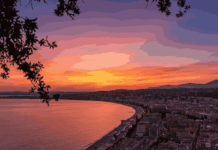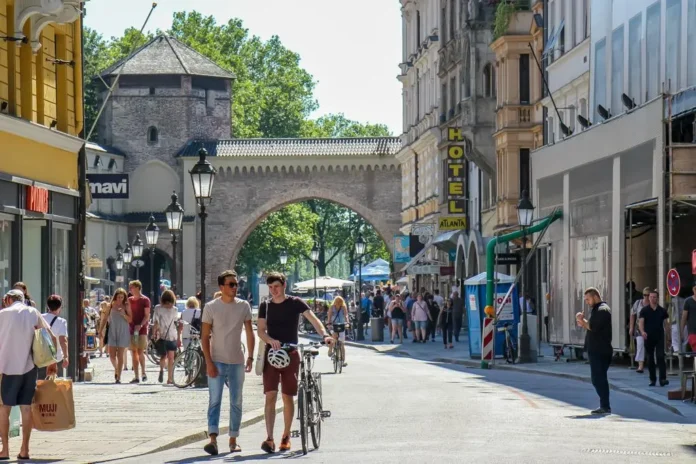
Munich doesn’t always show its age. Between sleek trams, modern architecture, and buzzing beer gardens, it can feel like a city that constantly reinvents itself.
Yet, under that surface, time sits quietly – layered in cobblestone streets, cloister walls, and baroque facades that survived fire, war, and progress.
Walking through Munich isn’t just about sightseeing; it’s a way of stepping through centuries without leaving the city limits.
Below are some walking routes that make that sensation real. They’re not the loud, postcard-perfect circuits. They’re the ones that slowly shift the atmosphere around you, as though the city is peeling back its own timeline while you walk.
The Royal Route
Few places in Munich feel as stately and cinematic as Odeonsplatz. It’s where the city’s royal past still hums beneath the pavement.
Start here and you’re already standing on ground that shaped Bavaria’s political and cultural identity for hundreds of years.
Before beginning your stroll from Odeonsplatz toward the Residenz, some travelers choose to enrich their evening plans through escort München, a discreet local service known for its sophistication.
Stops Along the Way
1. Feldherrnhalle
Built in the 1840s, modeled after Florence’s Loggia dei Lanzi, the Feldherrnhalle was commissioned by King Ludwig I to honor Bavarian generals.
Its arches have witnessed royal parades, protests, and more solemn moments in history. The echo that lingers inside it feels like the sound of centuries folded together.
2. Theatinerkirche
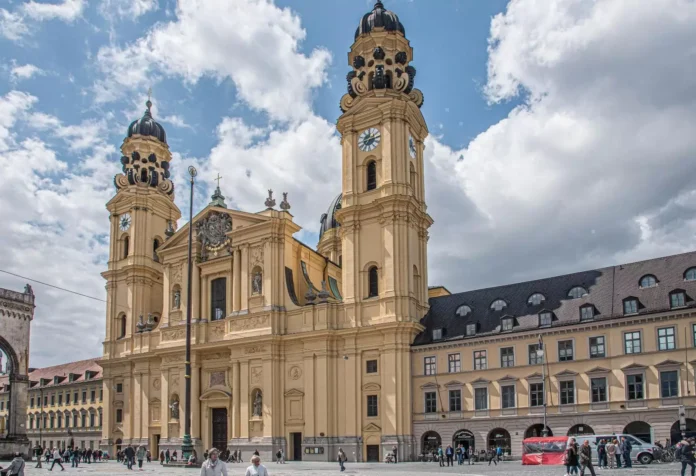
Next door, the yellow Theatine Church radiates southern warmth even on cold days. Its Italian baroque style – an unusual sight north of the Alps – was born from the grief of a royal couple praying for an heir.
Step inside and you’re wrapped in soft light and quiet devotion that seem untouched by time.
3. Residenzstraße and the Munich Residenz
Walk along Residenzstraße toward the Residenz, the former palace of the Wittelsbach dynasty. What looks like a single complex actually represents over four centuries of expansion.
Courtyards change in style as you pass through them – Renaissance merges into Rococo, and finally into Neoclassicism. It’s like flipping through an architectural family album.
Tip for the Walk
Pause at the Residenz courtyard fountain and listen to the sound of water against the stone. It’s the same sound a 17th-century courtier might have heard during a summer evening stroll.
Medieval Munich
If you start your walk at Sendlinger Tor, you’re standing at one of Munich’s medieval gates. It once protected a small, walled town – nothing like the metropolis it is today. But the rhythm of that old town still lingers.
Key Highlights
- Asamkirche (Asam Church): Built in the 18th century by the Asam brothers, this small, dramatic church feels more like a personal masterpiece than a public building. Its walls seem alive with movement, all gold and shadow, like a Baroque fever dream captured in plaster.
View this post on Instagram
- Viktualienmarkt: A short walk away, the market sits where old trade routes once converged. Even though it’s a place for fresh fruit and lunch breaks today, the layout dates back to early city planning. The smell of baked pretzels and roasted nuts blends perfectly with the sound of church bells from St. Peter’s nearby.
- Alter Peter (St. Peter’s Church): Climb the tower if you can. It’s one of the best ways to literally see time layered beneath your feet – from the medieval rooftops of the Altstadt to the distant outlines of modern glass structures.
| Stop | Historical Period | What to Notice |
| Sendlinger Tor | 14th century | Original city gate with Gothic structure |
| Asamkirche | 18th century | Baroque art explosion in miniature |
| Viktualienmarkt | 19th century roots | Open-air market where old meets daily life |
| Alter Peter | 12th century origins | Tower views that reveal the city’s growth |
Tip for the Walk
Try walking early in the morning, before the market crowds arrive. The cobblestones still hold a trace of chill from the night, and the old facades glow gently in the first light.
Along the River Isar
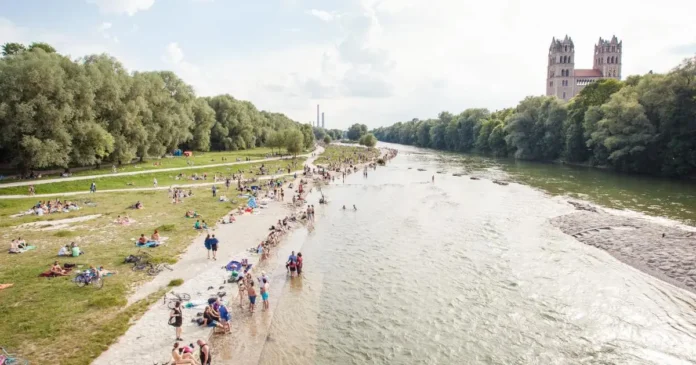
Not all of Munich’s history is royal or religious. Some of its most atmospheric routes lie along the Isar River, where 19th-century engineering meets wild greenbanks and the echo of the city’s industrial boom.
Recommended Route
Start near Deutsches Museum, which stands on an island in the river. Built in the early 1900s, it’s more than a museum – it’s a monument to human curiosity and Bavarian innovation. Then follow the river south along the Isarauen (Isar meadows).
You’ll pass:
- Cornelius Bridge: Elegant and stone-built, it connects two worlds – city bustle on one side, leafy calm on the other.
- Reichenbach Bridge: A favorite among locals, especially at sunset. You can still see remnants of the old hydroelectric infrastructure nearby, silent reminders of when Munich’s energy literally flowed from this river.
- Flaucher Park: Once farmland, now an urban oasis where the water still braids around gravel islands. Some old footpaths still follow their 19th-century routes, unpaved and slightly uneven – a small resistance against modernization.
Why It Feels Like Time Travel
Because it’s one of the few places where Munich’s relationship with the river still feels raw and authentic. You can stand under a 19th-century bridge, look across at 21st-century apartment blocks, and realize you’re tracing the city’s transition from industrial town to green capital in real time.
Schwabing
Once the haunt of writers, painters, and revolutionaries, Schwabing still carries the air of the fin de siècle – café chatter, political debate, and creative stubbornness. Walking through it is less about architecture and more about atmosphere.
Suggested Path
Start at Münchner Freiheit, a modern transport hub that sits above the ghosts of early 20th-century art salons. Then move toward Leopoldstraße, where old façades hide behind boutiques and bars.
Look for art nouveau (Jugendstil) details around Türkenstraße and Ainmillerstraße – curved balconies, floral stonework, doorframes that seem to ripple.
Don’t Miss
- Café Tambosi: Once a gathering spot for artists and musicians. Sit inside for a few minutes and you can almost imagine the smoke-filled rooms where the “Schwabinger Bohème” argued about art and politics.
- Englischer Garten Entrance: Take the path through the southern gate near the university. When you cross from Schwabing’s busy streets into that open greenery, the contrast hits immediately – though the park itself has been part of Munich’s urban life since 1789.
Why It Still Feels Alive
Because Schwabing never stopped reinventing itself. The cafés change, the people change, but the restlessness remains.
You can walk past a 1900s mansion, a 1960s student flat, and a 2020s café – all within a few blocks – and it somehow makes perfect sense.
Haidhausen
Haidhausen may look like a polished residential area today, but its history runs deep. It was once the home of craftsmen, brewers, and river workers who powered Munich’s early economy. Its quiet streets still carry the layout of a 19th-century working district.
The Route
Begin at Rosenheimer Platz, then head toward Preysingstraße and Pariser Platz. Unlike the grandeur of central Munich, here the beauty lies in small details – wrought-iron balconies, narrow alleys, and courtyards that feel suspended in another era.
| Stop | Character | What to Look For |
| Preysingstraße | Artisan roots | Stucco facades and low archways |
| Johannisplatz | Neighborhood charm | Small cafes and restored houses |
| Pariser Platz | Historic heart | Quiet benches and 19th-century buildings |
Continue down to Mariahilfplatz, where the red-brick Mariahilfkirche rises like an anchor in the skyline. On market days, the square fills with life, but even then, it feels local, not performative.
Tip for the Walk:
End your stroll at Wiener Platz, one of Munich’s smallest markets. Grab a snack or coffee and sit under the chestnut trees. It’s the kind of setting where time doesn’t seem to pass at all.
Nymphenburg
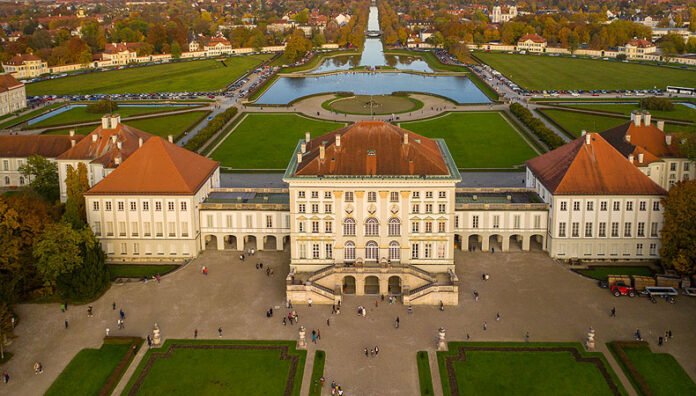
Nymphenburg Palace isn’t just an attraction – it’s an entire landscape of memory. Built as a summer residence for Bavarian rulers, its grounds stretch across lakes, canals, and ornate pavilions that date back to the 17th century.
Suggested Walking Circuit
Start at the main gate on Schloss Nymphenburg, walk along the central axis, and follow the canal leading toward the city. The alignment was deliberate, designed to showcase royal symmetry and the idea of human control over nature – a key theme of the baroque age.
Inside the park, smaller gems await:
- Amalienburg: A small hunting lodge so elaborately decorated it feels almost unreal.
- Pagodenburg: A whimsical structure built for tea ceremonies, inspired by the European fascination with the East in the 18th century.
- Magdalenenklause: A deliberate ruin, built to resemble a chapel crumbling in age – an early experiment in romantic nostalgia.
Each building tells a story of changing taste and power, and the long paths between them give you time to imagine the centuries slipping past.
The Monastic Route
There’s another kind of time travel hidden in Munich’s monastic history. The route from St. Anna im Lehel to St. Emmeram carries the calm rhythm of religious life that once defined entire districts.
Highlights Along the Way
- St. Anna im Lehel: Munich’s first rococo church, bathed in pastel tones and gilded details. The space still feels deeply personal, as if it was designed for quiet reflection rather than grandeur.
- Lehel Streets: As you walk deeper into the neighborhood, pay attention to the house fronts – many still show early 20th-century craftsmanship.
- St. Emmeram Abbey: Now part of a private estate, it traces back to medieval roots and remains one of the most peaceful corners of the city.
Why It Matters:
It’s a route that mirrors the spiritual layers of Munich – Catholic, artistic, contemplative. Walking it feels less like sightseeing and more like aligning yourself with the city’s slower heartbeat.
Hidden Corners That Hold Time Still
Not all time-travel walks need grand routes. Some of the most powerful moments happen when you stumble into a courtyard, an alley, or a forgotten square.
Try to Include on Your List
- Alter Hof: The old ducal residence, tucked behind Marienplatz, now surrounded by offices and cafés.
- Hofgarten: The Renaissance garden beside the Residenz, perfect for an afternoon pause under the arcades.
- Alte Pinakothek Gardens: Between museum visits, walk through this quiet green space; even the trees seem to whisper history.
- Maxvorstadt Backstreets: Around Schellingstraße, you’ll find early academic buildings from the university’s expansion era – architecture that still breathes intellectual optimism.
Each of these places works best when approached slowly. The trick isn’t covering ground, it’s letting the setting adjust your pace until the noise of the city fades.
Suggested Multi-Day Walking Plan
| Day | Theme | Route Length | Best Time |
| 1 | Royal and Baroque Munich | Odeonsplatz to Residenz | Morning to early afternoon |
| 2 | Medieval Core | Sendlinger Tor to Marienplatz | Early morning |
| 3 | Along the Isar | Deutsches Museum to Flaucher Park | Late afternoon |
| 4 | Bohemian and Academic | Schwabing to Maxvorstadt | Anytime |
| 5 | Royal Retreat | Nymphenburg Park | Full day |
Each day builds naturally on the one before. You start in the heart of power, pass through the city’s oldest streets, and finish surrounded by water and gardens – almost like Munich’s own evolution written in footsteps.
Final Thoughts
Walking through Munich is less about distance and more about awareness. Every block carries traces of something older, sometimes hidden behind glass storefronts or tram lines.
The city rewards those who slow down enough to notice – the curve of an old archway, the cobblestone that’s been smoothed by thousands of soles, the faint chime of bells that has marked time for centuries.
Those who walk it with patience will find that Munich doesn’t just show its past; it lets you feel it. Each step folds into the rhythm of the city’s long memory, and for a while, time feels wonderfully out of order.


